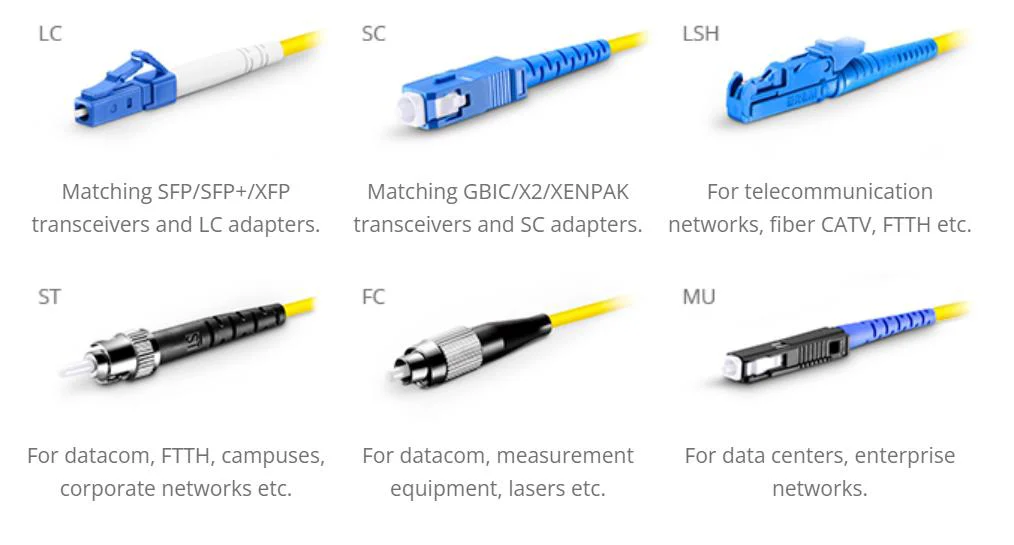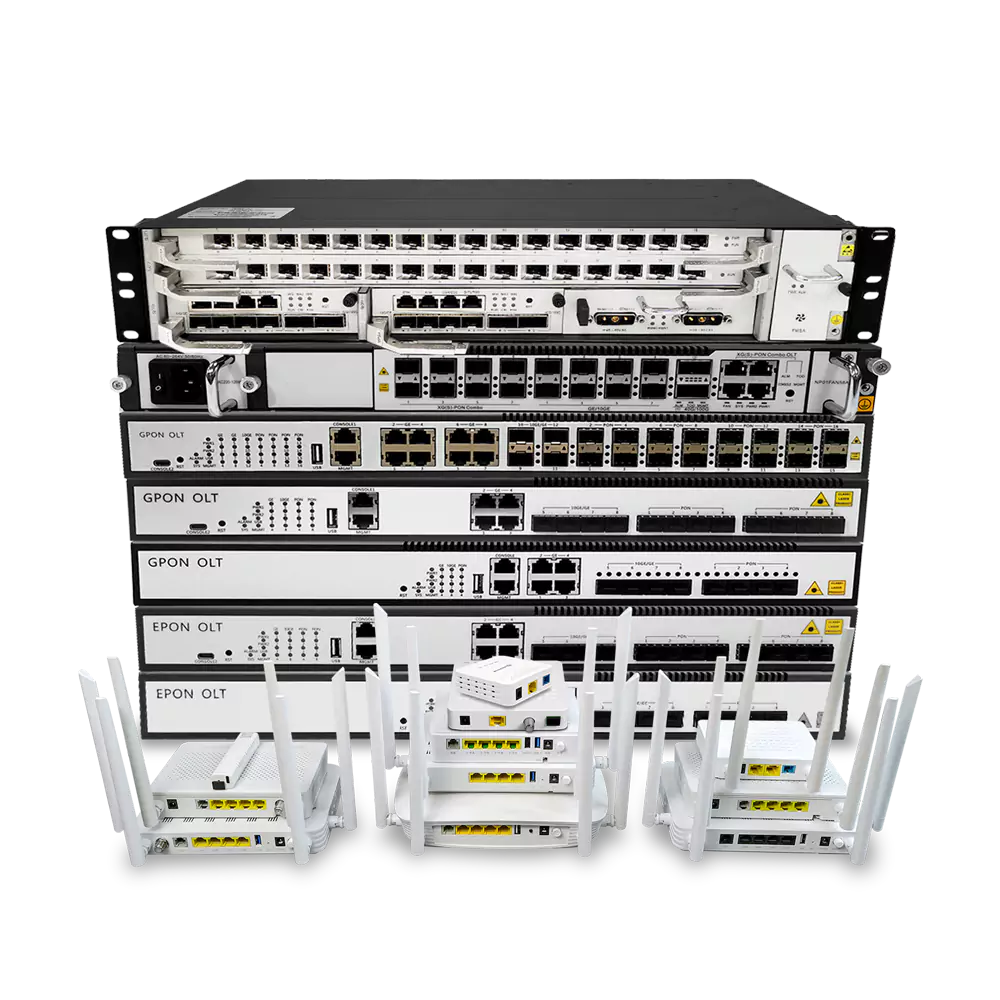Fiber optic connectors are used to join optical fibers with precision, ensuring efficient signal transmission. LC, SC, LSH, ST, FC, and MU are different types of connectors, each suited to specific applications. Here’s an overview of their differences:
1. LC (Lucent Connector)
- Features:
- Small form factor (SFF) connector.
- Ferrule diameter: 1.25mm (half the size of SC and ST ferrules).
- Push-pull mechanism for easy insertion and removal.
- Applications:
- High-density environments like data centers and telecommunications.
- Advantages:
- Compact size, ideal for limited space.
- Reliable performance in high-bandwidth environments.
2. SC (Subscriber Connector or Square Connector)
- Features:
- Standard-sized connector with a 2.5mm ferrule.
- Push-pull locking mechanism.
- Simple rectangular design.
- Applications:
- Telecommunications, CATV, and fiber optic networks.
- Advantages:
- Low insertion loss.
- Easy to use and cost-effective.
3. LSH (LSA+ Connector or E-2000)
- Features:
- Compact connector with a built-in dust protection mechanism (spring-loaded shutter).
- Ferrule diameter: 2.5mm.
- Push-pull mechanism with high precision.
- Applications:
- Telecom networks and critical environments where dust protection is crucial.
- Advantages:
- High durability and protection against contamination.
- Superior performance and reliability in harsh conditions.
4. ST (Straight Tip Connector)
- Features:
- Bayonet-style connector with a 2.5mm ferrule.
- Requires twisting to lock in place.
- One of the first fiber optic connector designs.
- Applications:
- Industrial, military, and multimode network applications.
- Advantages:
- Durable and robust for harsh environments.
- Disadvantages:
- Larger size and more time-consuming to connect compared to push-pull connectors.
5. FC (Ferrule Connector)
- Features:
- Metal threaded body with a 2.5mm ferrule.
- Screw-on mechanism for secure connections.
- Applications:
- Long-distance and high-vibration environments, such as telecommunications and test equipment.
- Advantages:
- High mechanical stability and low signal loss.
- Disadvantages:
- Slower to connect compared to LC or SC.
6. MU (Miniature Unit)
- Features:
- Ultra-small connector, similar to LC but even more compact.
- Ferrule diameter: 1.25mm.
- Snap-lock mechanism.
- Applications:
- Dense fiber arrays, optical backplanes, and high-density networks.
- Advantages:
- Extremely small size for high-density applications.
- Disadvantages:
- Less common compared to LC and SC, which might limit availability.

Comparison Table
| Connector Type | Ferrule Diameter | Locking Mechanism | Size | Typical Applications | Advantages |
|---|---|---|---|---|---|
| LC | 1.25mm | Push-pull | Compact | Data centers, telecom | High density, compact design |
| SC | 2.5mm | Push-pull | Standard | Telecom, CATV | Easy to use, cost-effective |
| LSH (E-2000) | 2.5mm | Push-pull | Compact | Harsh environments, telecom | Built-in dust protection |
| ST | 2.5mm | Bayonet | Large | Industrial, multimode networks | Durable for rugged conditions |
| FC | 2.5mm | Screw-on | Standard | Long-distance, high-vibration areas | High mechanical stability |
| MU | 1.25mm | Snap-lock | Ultra-compact | High-density, optical backplanes | Extremely compact, high performance |
Choosing the Right Connector
- LC or MU: For high-density, space-constrained environments like data centers.
- SC or ST: For general-purpose use where cost-effectiveness and ease of use are priorities.
- FC: For high-precision or high-vibration environments requiring secure connections.
- LSH: For environments where contamination or dust is a concern.
Each connector has its specific use case, so the choice depends on the network requirements, environment, and application.

